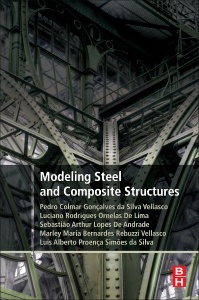Description
Modeling Steel and Composite Structures
Authors: Vellasco Pedro, Andrade Sebastiao Arthur Lopes de, Lima Luciano Rodrigues Ornelas de, Vellasco Marley Maria Bernardes Rebuzzi, Silva Luis Alberto Proenca Simoes da
Language: English
Subjects for Modeling Steel and Composite Structures:
120.27 €
In Print (Delivery period: 14 days).
Add to cartSupport: Print on demand
Description
/li>Contents
/li>Readership
/li>Biography
/li>Comment
/li>
Modeling Steel and Composite Structures explains the computational tools, methods and procedures used to design steel and composite structures. The reference begins with the main models used to determine structural behavior. This is followed by a detailed description of experimental models and their main requirements and care. Numerous simulations presenting non-linear response are illustrated as are their restrictions in terms of boundary conditions, main difficulties, solution strategies and methods adopted to surpass convergence difficulties. In addition, examples of the use of computational intelligence methods to simulate steel and composite structures response are presented.
Structural Engineers, Structural Designers, and Construction Engineers
- Includes numerical models based in the finite element method
- Provides numerous simulations, presenting a non-linear response
- Contains examples of the use of computational intelligence methods to simulate steel and composite structures




